Skyscrapers have shaped city skylines for over a century, becoming symbols of modernity and architectural innovation. While most people associate these towering structures with the 20th century, many of the world’s oldest ones still stand today, testifying to the early ambition to reach new heights. These pioneering buildings laid the foundation for modern engineering and design, blending architectural beauty with technological advancements. In this article, we explore some of the oldest skyscrapers around the world that remain standing, each with its unique story, style, and significance.
Chicago Board of Trade Building, Chicago (1930)
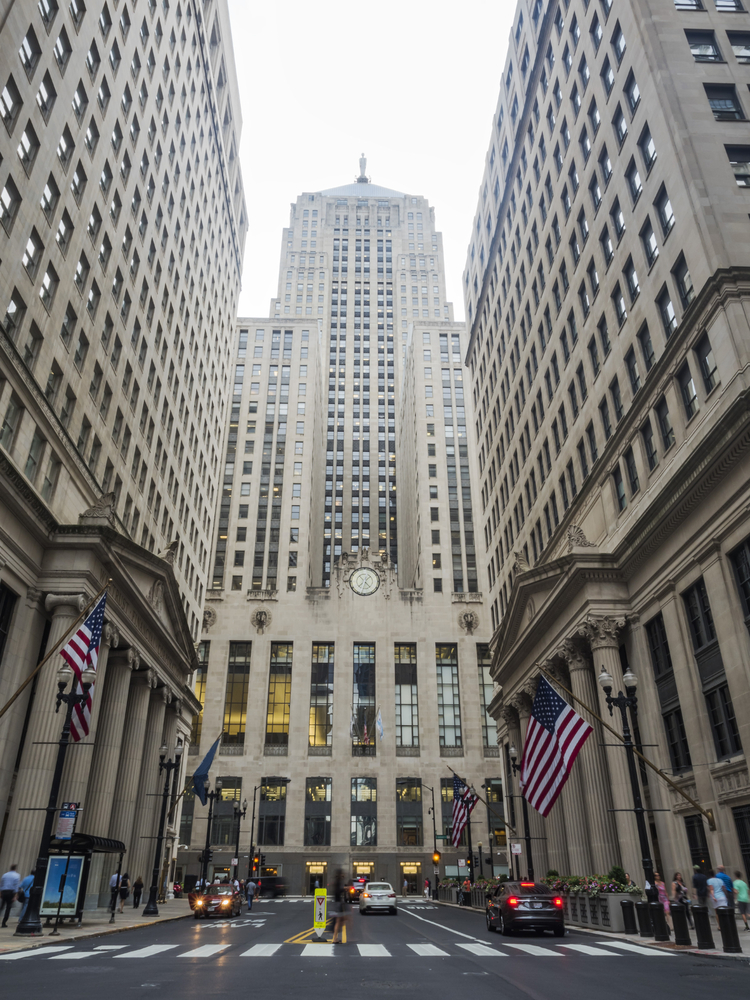
The Chicago Board of Trade Building, completed in 1930, stands as an iconic part of the city’s skyline. At 45 stories tall, it was one of the tallest buildings in the world when it was completed. Designed by architects Holabird & Root in the Art Deco style, it served as the headquarters for the Chicago Board of Trade, the world’s oldest futures and options exchange. Its façade is composed of limestone with a sleek, vertical emphasis that epitomizes Art Deco’s grandeur. It is crowned by a 31-foot statue of Ceres, the Roman goddess of agriculture, symbolizing the building’s ties to the commodities market. Today, it remains a functioning hub of financial activity, housing offices, and trading floors, while also being recognized as a National Historic Landmark.
Fisher Building, Detroit (1928)
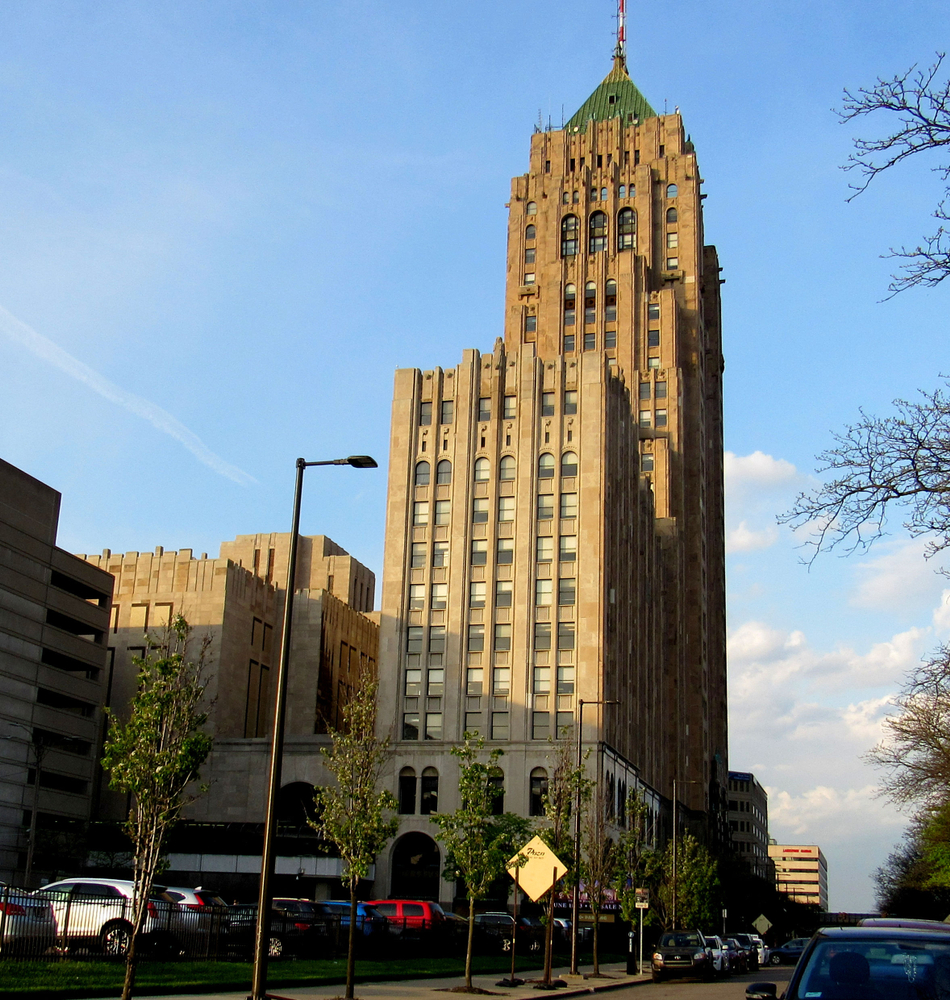
The Fisher Building, completed in 1928 in Detroit, Michigan, is a masterpiece of Art Deco architecture and remains one of the city’s most beloved skyscrapers. Designed by Albert Kahn, this 30-story structure rises 428 feet and features an exterior clad in limestone, granite, and polished marble. It was commissioned by the Fisher brothers, founders of Fisher Body, a division of General Motors, and was intended to be a part of a much larger complex, though only this portion was completed due to the Great Depression. Inside, the building boasts lavish mosaics, marble columns, and painted ceilings that showcase intricate detail and craftsmanship. Today, it is still used for office spaces and retail shops, maintaining its status as a Detroit architectural icon.
Equitable Building, New York City (1915)
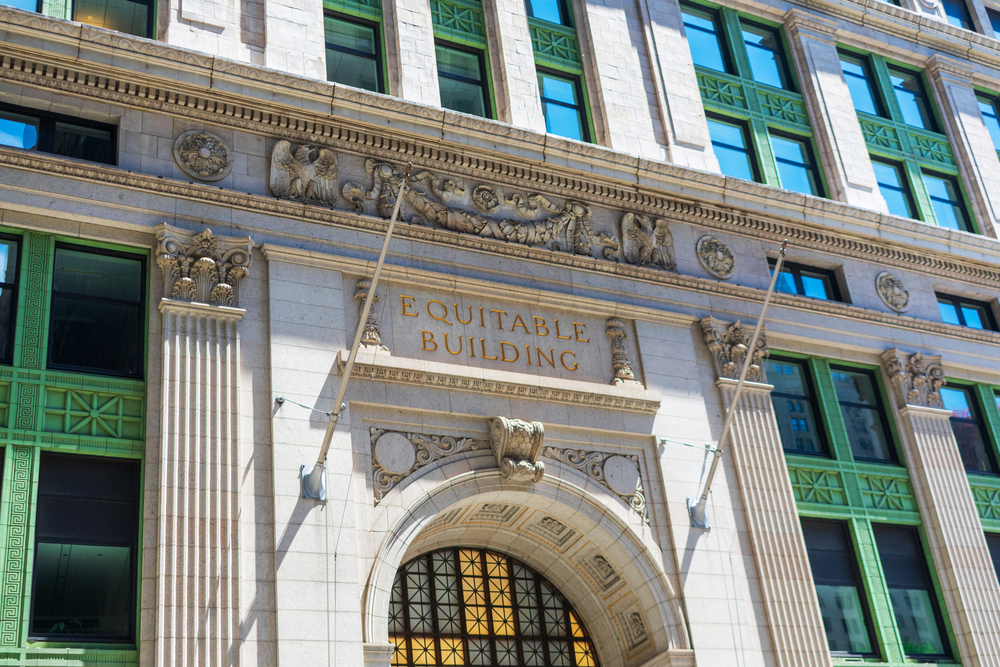
The Equitable Building in New York City, completed in 1915, stands as an iconic early skyscraper that influenced zoning laws due to its sheer size and impact on sunlight at street level. Designed by Ernest R. Graham, this 38-story office building reaches 538 feet, making it one of the tallest structures of its time. Located at 120 Broadway, it features a steel skeleton and limestone façade that embodies the Beaux-Arts architectural style. Its bulk and height sparked controversy, leading to the adoption of New York City’s first zoning laws in 1916, which required setbacks to allow more light and air at street level. It has since been renovated multiple times but remains a functioning office space.
Flatiron Building, New York City (1902)
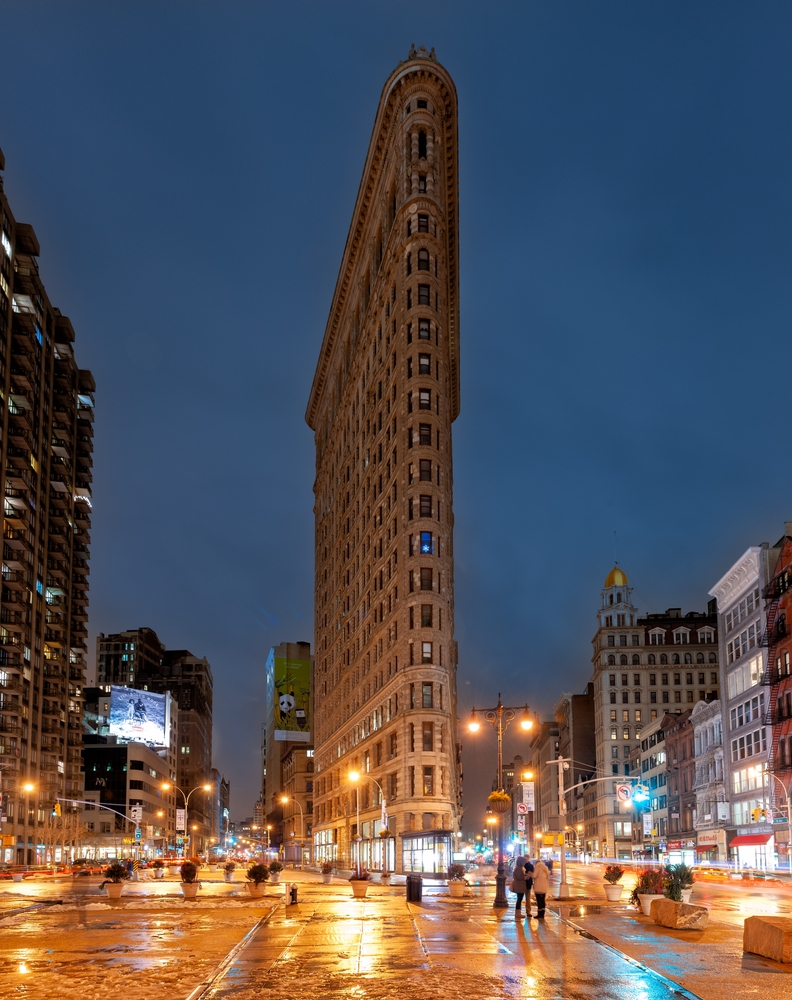
The Flatiron Building, completed in 1902, is one of the most famous skyscrapers in the world due to its unique triangular shape. Designed by architect Daniel Burnham, the 22-story building stands at the intersection of Broadway and Fifth Avenue in Manhattan. Its distinctive shape was dictated by the triangular plot of land on which it was built, giving it the appearance of a “flat iron,” which became its namesake. The steel-frame structure was one of the first of its kind, allowing the building to rise to its impressive height without thick masonry walls. Its Beaux-Arts façade, with its elaborate limestone and terracotta detailing, is one of the building’s most admired features. Today, it remains one of New York City’s most photographed buildings, a lasting symbol of early skyscraper innovation.
Park Row Building, New York City (1899)
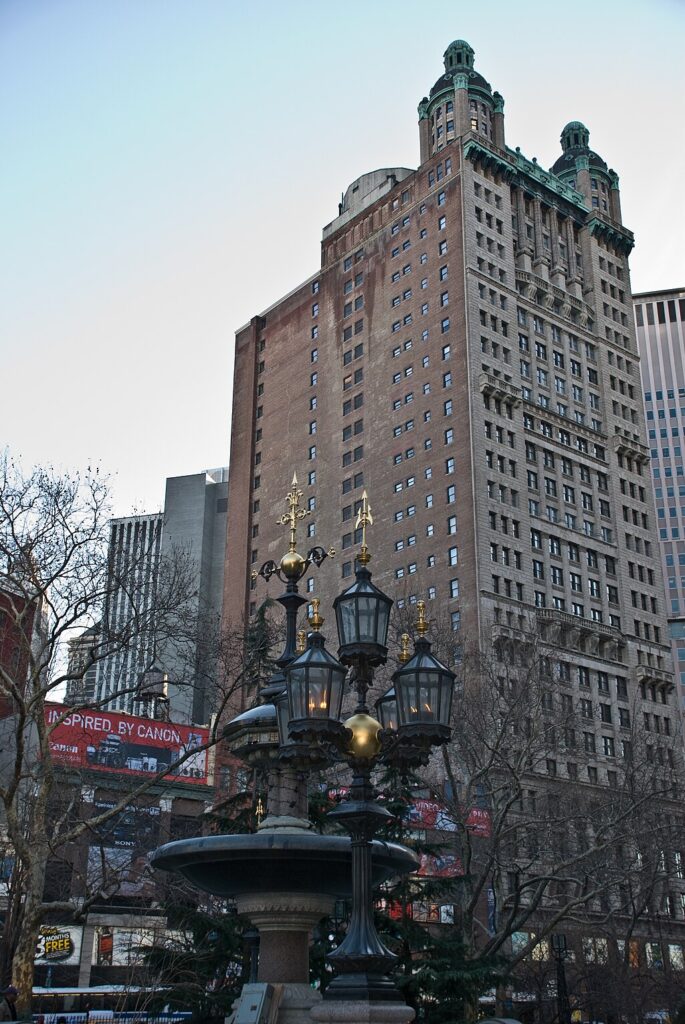
Completed in 1899, the Park Row Building was one of the tallest skyscrapers in the world at the time of its construction, standing at 391 feet with 31 stories. Designed by R.H. Robertson, this early New York skyscraper is located near City Hall Park and features two cylindrical towers that rise above the main building. It was an early example of steel-frame construction, allowing it to reach its impressive height without needing massive masonry walls at the base. The exterior of the building combines Beaux-Arts and Renaissance Revival elements, with decorative touches that add elegance to its imposing height. At the time of its completion, it was celebrated for both its height and modern amenities, including electric elevators. It still stands today as a residential and office building, a testament to the durability of early skyscraper engineering.
New York Times Building (41 Park Row), New York City (1889)
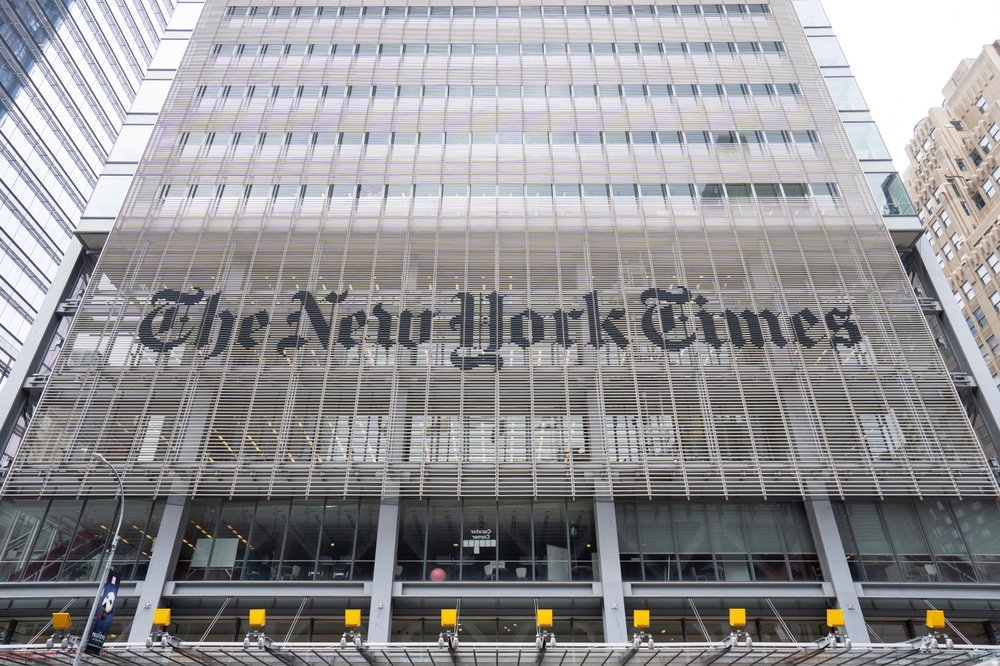
Built between 1888 and 1889, the New York Times Building at 41 Park Row in Lower Manhattan is one of the oldest skyscrapers still standing in the city. Designed by architect George B. Post in the Romanesque Revival style, the building was initially 13 stories tall before later being expanded to 16 stories. It served as the headquarters of The New York Times newspaper until 1903, making it a significant structure in the history of journalism. The area around the building became known as “Newspaper Row,” as other prominent papers also established their offices nearby. Its exterior is characterized by red brick, terracotta ornamentation, and prominent arches. In 1951, it was acquired by Pace University, which has since renovated the space while maintaining its historical significance. Its historical prominence continues today as a symbol of both early skyscraper design and the newspaper industry’s rise in New York City.
Wilder Building, Rochester, New York (1888)
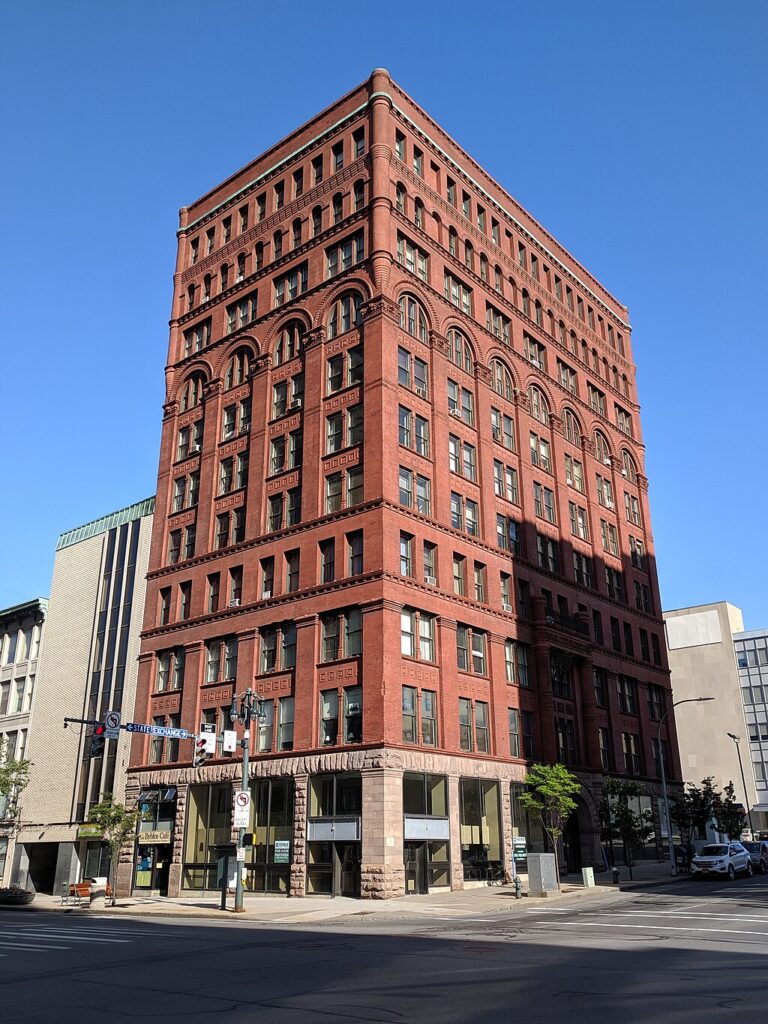
The Wilder Building, completed in 1888, stands as a prominent example of Rochester, New York’s architectural heritage. Designed by local architects Warner & Brockett, it was commissioned by banker Samuel Wilder as the city’s first skyscraper. Rising 11 stories, it was originally adorned with spires at each of its four corners, giving it a striking presence. Though the spires have since been removed, it still retains much of its original Romanesque-style architecture. It features a rich brick façade with intricate stonework and arched windows, which were hallmarks of late-19th-century design. In 1985, it was listed on the National Register of Historic Places, marking its importance in Rochester’s architectural history. It also houses one of the world’s oldest surviving mail chutes, a testament to its early skyscraper innovations.
Rookery Building, Chicago (1888)
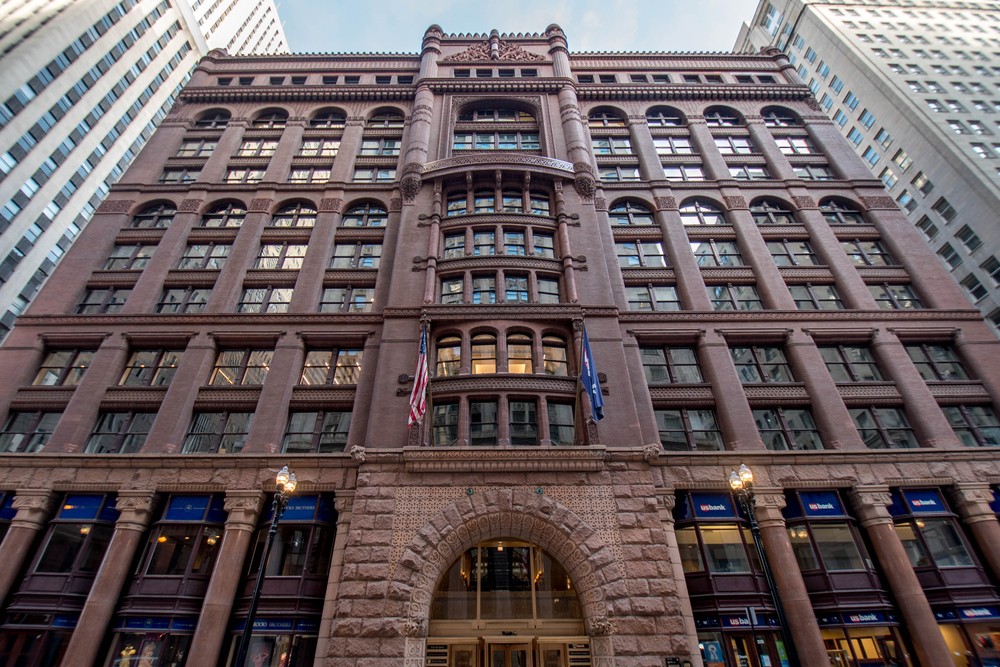
Completed in 1888, the Rookery Building in Chicago is one of the most iconic examples of early skyscraper architecture. Designed by renowned architects Daniel Burnham and John Wellborn Root, it stands 12 stories tall, featuring an impressive blend of Romanesque and early Chicago School styles. It is especially notable for its light-filled atrium, which was remodeled in 1905 by Frank Lloyd Wright with ornate, Persian-inspired white marble detailing. Its innovative steel-frame construction allowed it to be one of the tallest buildings of its time. Over the years, it has been updated for modern office use but retains its historical significance and charm. The building remains a working office space in Chicago’s financial district and has received numerous preservation awards. It is also a proud holder of LEED Gold certification, making it the oldest skyscraper to receive such an environmental honor.
Sun Building, Washington, D.C. (1887)
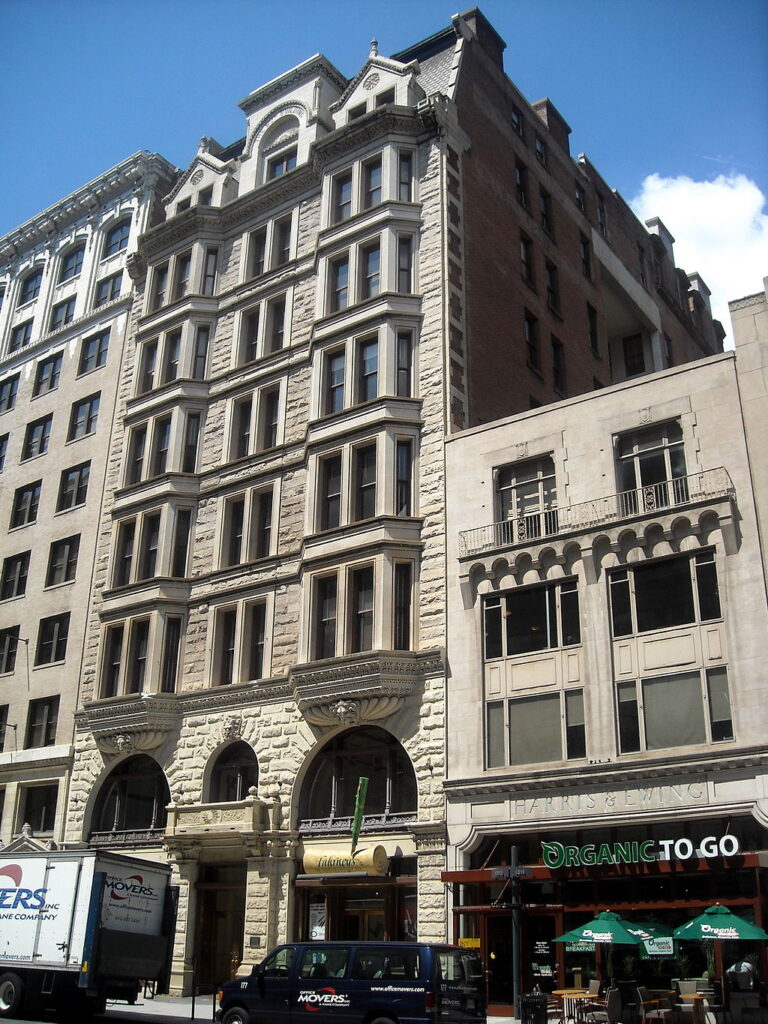
The Sun Building, completed in 1887, holds the distinction of being Washington D.C.’s oldest skyscraper. Designed by architect Alfred B. Mullett, this 9-story building originally served as the headquarters for the Baltimore Sun newspaper’s Washington bureau. At the time of its construction, it was the tallest building in the city, thanks to its innovative use of a steel skeleton. This construction method allowed for it to rise to new heights while offering more space for commercial tenants. Throughout its history, it housed various government agencies, including the Interstate Commerce Commission, and was added to the National Register of Historic Places in 1985. Its distinctive architecture includes a limestone façade and intricate cornices, which reflect a blend of Romanesque and Victorian styles. Today, it still stands as a landmark in Washington, D.C., with much of its original charm intact.
Osborne Apartments, New York City (1885)
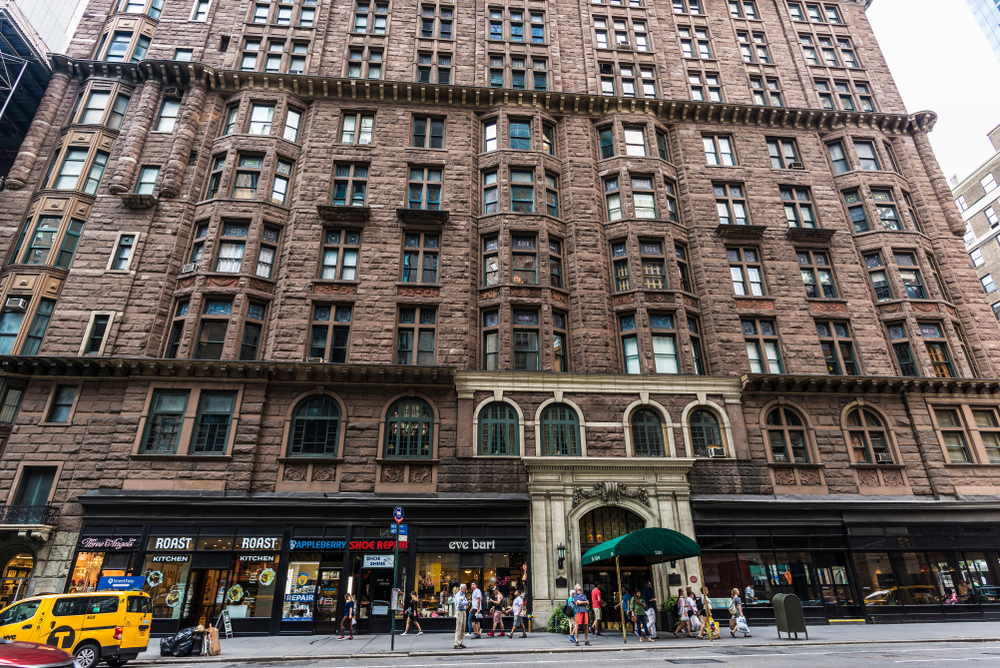
The Osborne Apartments, completed in 1885, is one of New York’s earliest examples of a high-rise residential building. Standing at 11 stories, this building was designed by architect James Edward Ware in the Renaissance Revival style. Located at the corner of 57th Street and 7th Avenue in Manhattan, it features a rusticated brownstone base with an intricately detailed brick façade above. It was among the first luxury apartment buildings in the city, offering spacious units for affluent residents. Throughout its history, it has housed a variety of notable tenants, including Leonard Bernstein and Van Cliburn. The interior is just as impressive, with lavish mosaics, marble staircases, and opulent wood paneling. It remains one of the most prestigious residential buildings in New York, a testament to the city’s early experimentations with skyscraper living.
Temple Court Building (5 Beekman Street), New York City (1883)
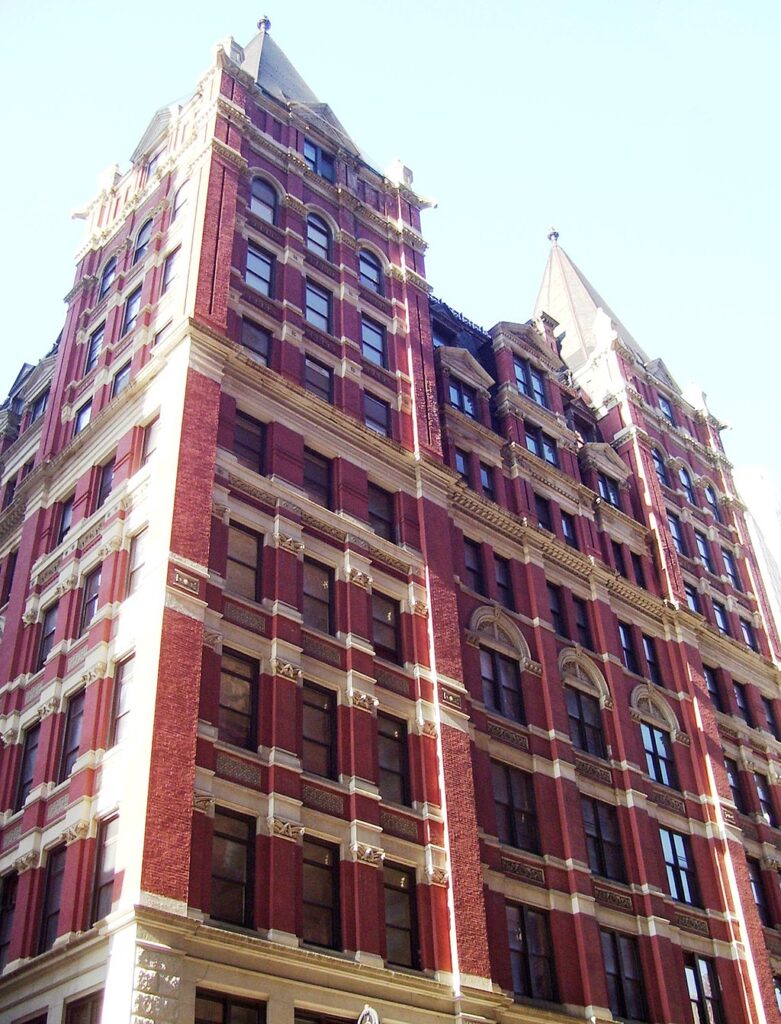
Constructed between 1881 and 1883, the Temple Court Building, now known as The Beekman, is one of New York City’s oldest surviving skyscrapers. Standing at 10 stories tall, this building was designed in a Queen Anne and neo-Grec style by architect Eugene Cordano. The structure is notable for its use of a fireproof iron framework, a significant innovation at the time, allowing for greater height without the need for thick, load-bearing walls. Originally intended as an office building, it housed various legal firms, making it a hub for New York’s legal community in the late 19th century. It features a stunning atrium with a nine-story skylight, which was carefully restored during its transformation into a luxury hotel in 2016. Now, it offers both historical charm and modern luxury, maintaining its Victorian-era grandeur. Its careful preservation of the original architecture provides a unique glimpse into New York’s early skyscraper history. It is also part of the Tribeca South Historic District and stands out for its intricate brick and terracotta façade, highlighting craftsmanship from the 1880s.
This article originally appeared on Rarest.org.
More from Rarest.org
21 Critically Endangered Mammals You’ve Never Heard Of

There are many species in the world facing the threat of extinction, but some remain largely unknown. These critically endangered mammals, often overlooked, play vital roles in their ecosystems. Read More.
9 Retro Advertising Memorabilia That’s Now Worth a Small Fortune
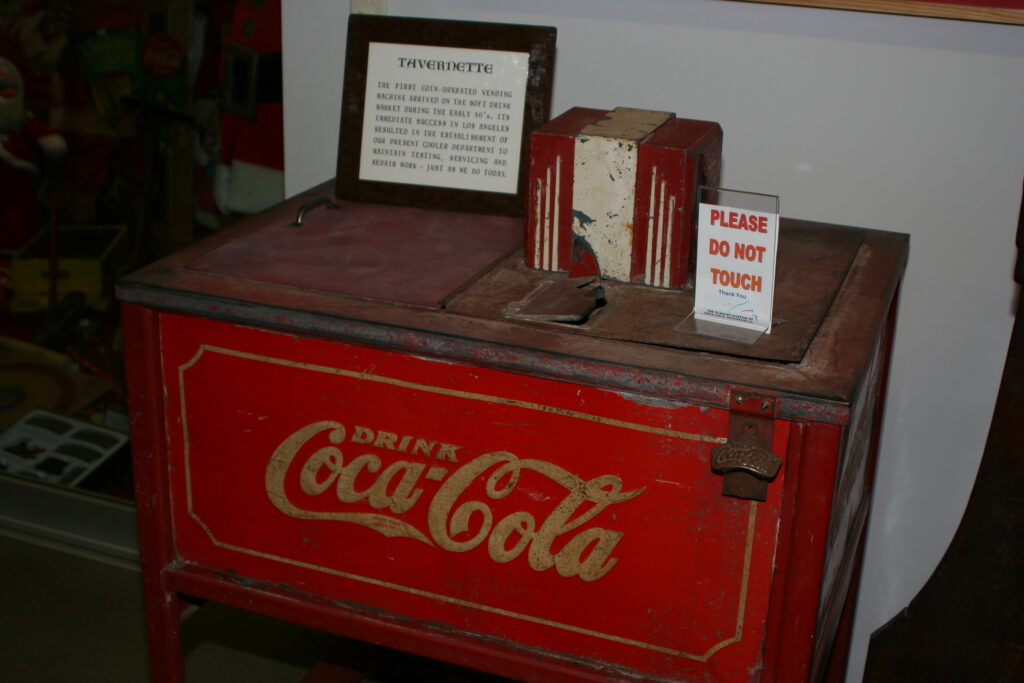
Retro advertising memorabilia is not only a window into the past but also a treasure trove for collectors. From iconic brand signs to old promotional items, these pieces have gained impressive value over time. Read More.
10 Old Travel Souvenirs That Have Skyrocketed in Value
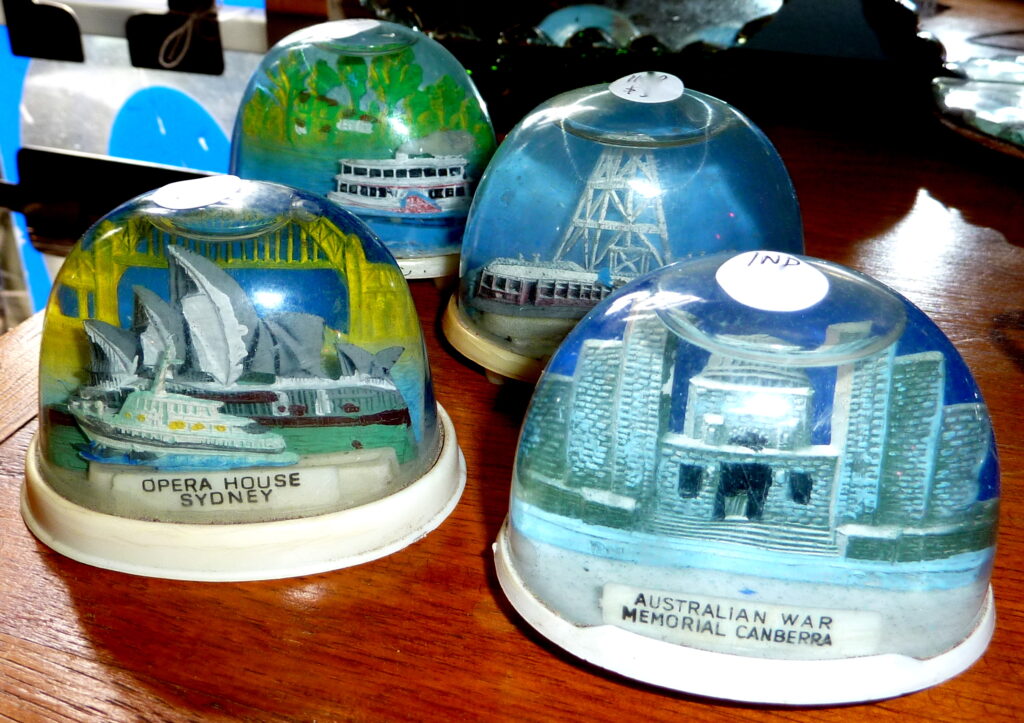
Travel souvenirs are more than just mementos; they often carry sentimental value. But some of these nostalgic items have gained financial worth over time. Read More.
